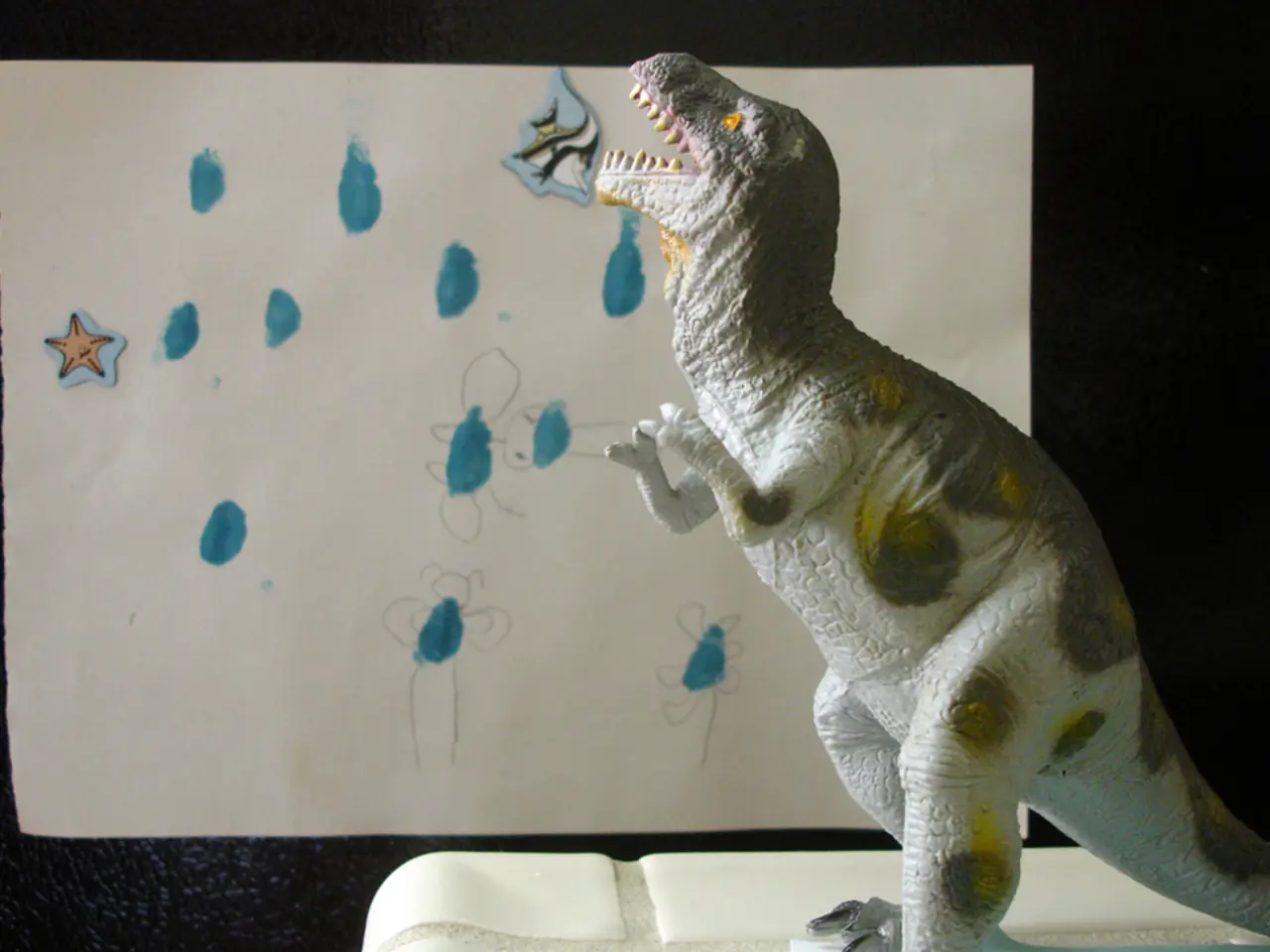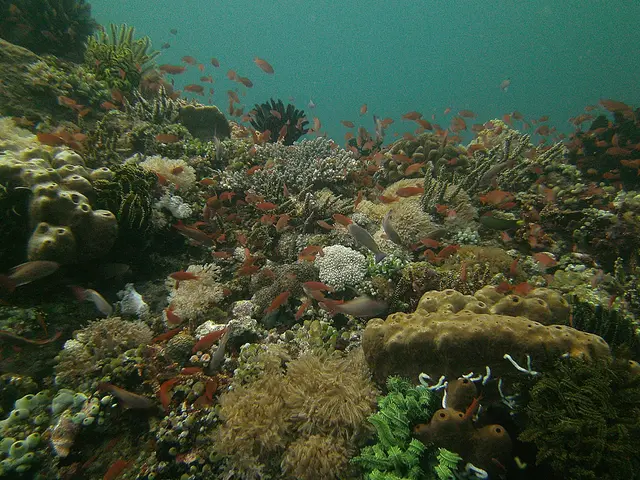Giant Predator of the Eocene Era: Hyaenodon's Titanic Teeth
In the distant past, during the Eocene Epoch, a formidable predator roamed the Earth - the Hyaenodon. This extinct genus, belonging to the order Hyaenodonta, was a hypercarnivorous placental mammal that played a crucial role in the evolution of mammals.
The Mighty Hyaenodon
Hyaenodons were distinctly characterized by their robust jaws and specialized teeth, including carnassial molars. These features were essential for their predatory lifestyle, enabling them to tear through flesh with ease. The species varied greatly in size, with smaller ones like H. microdon and H. mustelinus being about 50 cm long and weighing around 5 kg, while larger forms such as Hyaenodon gigas measured over 3 meters in length.
A Keystone Species in the Eocene Epoch
Hyaenodons were primarily meat-eaters, lacking the dental versatility to process plant material. Their diet consisted mainly of small and large herbivores, depending on their size. This specialization allowed them to fill various predatory niches, contributing to the diversity of carnivorous mammals during the Eocene.
During the Eocene, Hyaenodons coexisted with other carnivorous groups like early carnivorans. However, Hyaenodons' growth and development patterns, such as slower tooth eruption, differed from those of modern carnivorans. This difference in development might have influenced their adaptability and survival strategies compared to other predators.
The Decline and Extinction of Hyaenodon
The decline and eventual extinction of Hyaenodon species have been linked to environmental changes, such as global cooling and the shift from forests to open grasslands in the early Oligocene. These changes likely made it difficult for Hyaenodons to adapt, paving the way for the rise of modern carnivorans.
The Legacy of Hyaenodon
Hyaenodons played a significant role in filling various predatory niches, influencing the evolution of other carnivorous mammals. Their extinction allowed modern carnivorans to dominate these niches, leading to the biodiversity of carnivorous mammals seen today.
The presence of Hyaenodon and other large carnivores during the Eocene influenced the evolution of prey species. The competition and predation pressure they exerted likely drove the evolution of faster, more agile herbivores, contributing to a more diverse and competitive ecosystem.
Every new fossil find adds another piece to the puzzle, helping us understand not just Hyaenodon, but the ancient ecosystems it ruled. Hyaenodon's legacy lives on in the imagination of scientists and storytellers, inspiring countless reconstructions in museums and documentaries. Its fossil remains are silent witnesses to the fierce battles that shaped the ancient world.
Evidence suggests that Hyaenodon's social behaviors, if they existed, might have helped it thrive in tough times and share the spoils of big kills. The lessons learned from studying Hyaenodon shed light on evolution, adaptation, and the ever-changing dance of life and death. The constant struggle for survival pushed Hyaenodon to evolve into the apex predator it became. Hyaenodon's disappearance marked the end of the creodonts, a group that had ruled for millions of years.
In essence, Hyaenodon was more than just an extinct carnivore. It was a keystone species that played a vital role in the evolution of mammals and the shaping of ancient ecosystems. Its story continues to captivate scientists and the public alike, serving as a testament to the resilience and adaptability of life on Earth.
Read also:
- Overcoming Yielding Regulations Hurdles in Indian Export Sector for EU Markets
- Shaping production and consumption tendencies via cosmetic certification
- Health care professionals targeted in a shooting incidents, a pattern of hostile actions against health workers continues to unfold, with many observing this trend as unremarkable.
- Transgender individuals' journey towards aligning their gender identity: Key aspects







